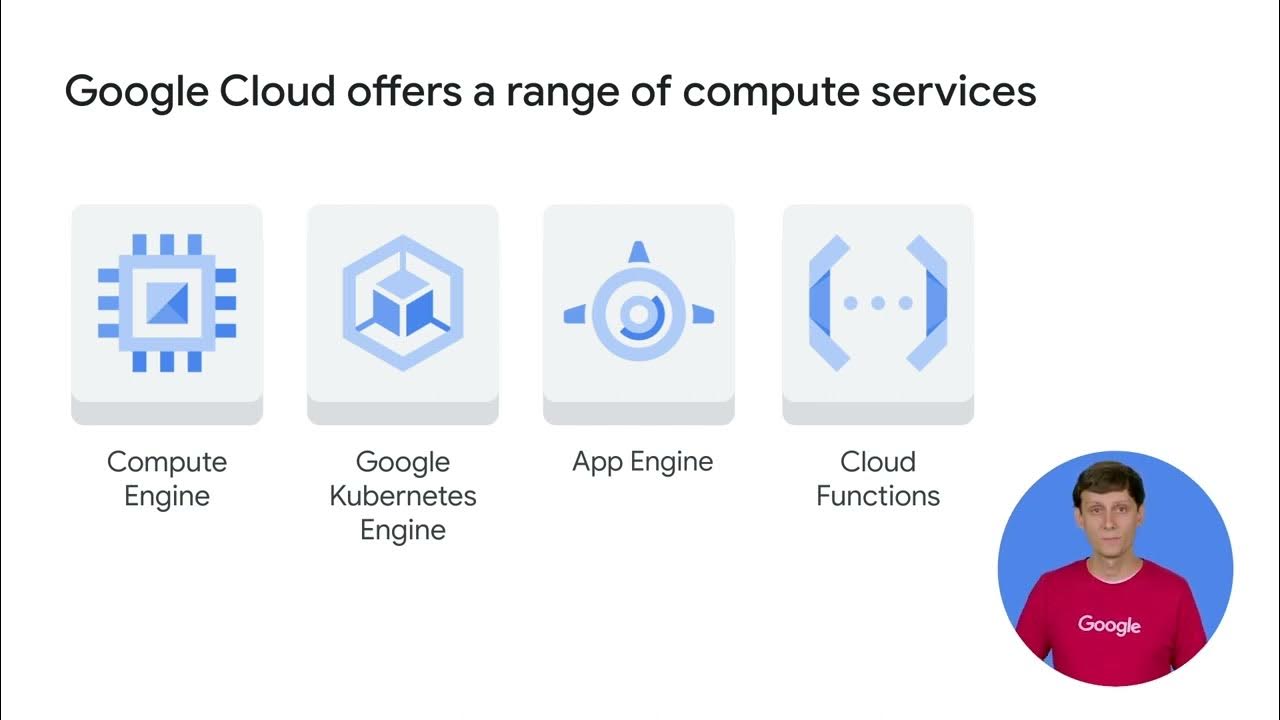Building hybrid clouds
Summary
TLDRThis video covers various ways to build a hybrid cloud using Google Cloud. It explores options like IPsec VPN connections over the internet, Dynamic Routing with Cloud Router, Direct Peering for connecting through Google’s points of presence, and Dedicated Interconnect for private connections with high SLA guarantees. Additionally, Partner Interconnect provides flexibility for those unable to access Dedicated Interconnect. The video outlines the benefits, drawbacks, and use cases of each method to help users choose the best option based on their security, reliability, and bandwidth needs.
Takeaways
- 😀 Google Cloud offers several options to build a hybrid cloud environment.
- 😀 One option is using a virtual private network (VPN) over the internet with the IPsec protocol to create a tunnel connection.
- 😀 Cloud Router allows dynamic routing between Google VPC and other networks via the Border Gateway Protocol (BGP).
- 😀 Adding new subnets to a Google VPC automatically updates routes for connected on-premises networks.
- 😀 Using the internet for connectivity might not be ideal for everyone due to security concerns or bandwidth issues.
- 😀 Direct Peering involves placing a router in a Google point of presence (PoP) to exchange traffic with Google Cloud.
- 😀 Google has over 100 points of presence globally, and Carrier Peering helps provide connectivity from on-premises networks through a service provider.
- 😀 Peering is not covered by a Google service level agreement (SLA), which might be a downside for some customers.
- 😀 Dedicated Interconnect provides a direct, private connection to Google Cloud, with a 99.99% SLA if the connection meets Google's specifications.
- 😀 Partner Interconnect provides connectivity via a third-party service provider and is useful when a data center can't access a Dedicated Interconnect facility.
Q & A
What is the primary goal of connecting Google Virtual Private Clouds (VPCs) to other networks?
-The primary goal is to allow Google Cloud customers to integrate their Google VPCs with other networks, such as on-premises networks or networks in other clouds, to create a hybrid cloud environment.
How does the IPsec VPN protocol help in establishing a hybrid cloud connection?
-The IPsec VPN protocol is used to create a secure 'tunnel' connection over the internet between different networks, allowing for secure communication between Google Cloud VPCs and other networks.
What role does Cloud Router play in a VPN connection?
-Cloud Router enables dynamic routing by allowing the exchange of route information between the Google Cloud VPC and other networks via the Border Gateway Protocol (BGP), ensuring that any new subnets in the VPC are automatically routed to on-premises networks.
Why might using the internet for VPN connections not always be the best option?
-Using the internet may not be ideal due to security concerns or bandwidth reliability issues, which can affect the performance and stability of the connection.
What is Direct Peering, and how does it work?
-Direct Peering involves connecting a customer's router to one of Google’s public data centers, known as a point of presence (PoP), to exchange traffic between the networks. It provides direct access to Google services without going through the internet.
How does Carrier Peering differ from Direct Peering?
-Carrier Peering allows customers who are not physically located near a Google PoP to connect to Google’s network through a service provider's network, facilitating access to Google Workspace and Google Cloud products.
What is a major disadvantage of Peering, and how does it impact users?
-A major disadvantage of Peering is that it does not come with a Google service level agreement (SLA), meaning customers cannot rely on Google for guaranteed uptime or performance in these connections.
What is Dedicated Interconnect, and how does it improve connection reliability?
-Dedicated Interconnect provides private, direct connections to Google, offering higher uptime and reliability, with up to a 99.99% SLA if the connection meets Google's topological specifications. These connections can also be backed up by a VPN for additional reliability.
What is the benefit of using Partner Interconnect?
-Partner Interconnect allows customers to connect their on-premises networks to Google Cloud through a third-party service provider. It is ideal when a data center is too far from a Dedicated Interconnect facility or when full 10 Gbps connections are not necessary.
What is the SLA for Partner Interconnect, and how is it different from Dedicated Interconnect?
-Partner Interconnect can offer up to a 99.99% SLA, similar to Dedicated Interconnect, as long as the connection meets Google’s specifications. However, it is important to note that Google is not responsible for the third-party service provider’s infrastructure or any issues outside of Google's network.
Outlines

Cette section est réservée aux utilisateurs payants. Améliorez votre compte pour accéder à cette section.
Améliorer maintenantMindmap

Cette section est réservée aux utilisateurs payants. Améliorez votre compte pour accéder à cette section.
Améliorer maintenantKeywords

Cette section est réservée aux utilisateurs payants. Améliorez votre compte pour accéder à cette section.
Améliorer maintenantHighlights

Cette section est réservée aux utilisateurs payants. Améliorez votre compte pour accéder à cette section.
Améliorer maintenantTranscripts

Cette section est réservée aux utilisateurs payants. Améliorez votre compte pour accéder à cette section.
Améliorer maintenant5.0 / 5 (0 votes)






